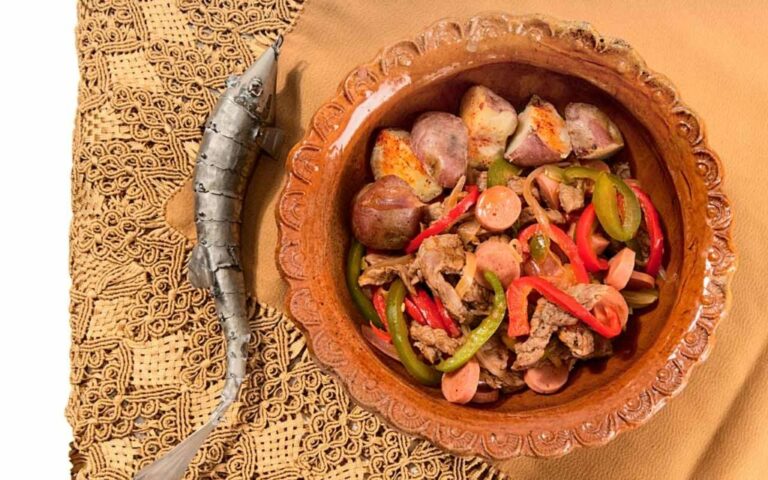Introduction: Bolivian Cuisine
Bolivia is a South American country that boasts a vibrant and diverse cuisine. The country’s cuisine has been influenced by its indigenous roots and colonial past, resulting in a unique blend of flavors and ingredients. Bolivian cuisine is known for its hearty and filling dishes, with a focus on stews, soups, and grilled meats.
A Look into Bolivian Ingredients
Bolivian cuisine heavily relies on locally sourced ingredients, resulting in a diverse range of flavors and ingredients. The cuisine’s use of indigenous ingredients is what sets it apart from other Latin American cuisines. Bolivian dishes typically include a combination of vegetables, grains, meats, and spices.
Uncovering the Local Produce
Bolivia’s diverse climate and geography allow for an abundance of locally grown produce. The country’s markets are filled with colorful fruits and vegetables, including tropical fruits such as passionfruit and pineapples, and root vegetables such as sweet potatoes and yucca.
Corn: The Staple Ingredient
Corn is a staple ingredient in Bolivian cuisine, used in various forms such as flour, kernels, and hominy. It is used in dishes such as soups, stews, and bread. Choclo, a type of corn with large, starchy kernels, is commonly used in dishes such as humintas, a type of steamed corn cake.
Quinoa: The Superfood Grain
Quinoa, a grain that originated in the Andean region, is a superfood that has gained popularity worldwide. In Bolivia, it is commonly used in dishes such as salads, stews, and soups. Quinoa is a great source of protein and is gluten-free, making it a popular ingredient for those with dietary restrictions.
Potatoes: A Wide Variety
Potatoes are another staple ingredient in Bolivian cuisine, with over 4,000 varieties grown in the country. They are used in dishes such as papas a la huancaína, a potato dish served with a spicy peanut sauce. Chuño, a type of freeze-dried potato, is also a popular ingredient in soups and stews.
The Andean Flavors of Ají
Ají is a spicy sauce that is commonly used in Bolivian cuisine. It is made with a combination of hot peppers, garlic, and other spices. In Bolivia, ají is often served alongside grilled meats and is used to flavor stews and soups.
Bolivia’s Unique Herbal Infusions
Bolivian cuisine also includes a wide range of herbal infusions, known as mate or coca tea. Mate de coca is made from coca leaves, a plant grown in the Andes, and is said to have medicinal properties. Muña, a type of mint, is used to make infusions that are believed to aid with digestion.
In conclusion, Bolivian cuisine is a product of the country’s diverse geography and cultural heritage. It is characterized by the use of locally sourced ingredients, resulting in a unique blend of flavors and ingredients. From the staple ingredients such as corn and potatoes to the superfood grain quinoa, Bolivian cuisine is a must-try for food lovers.

